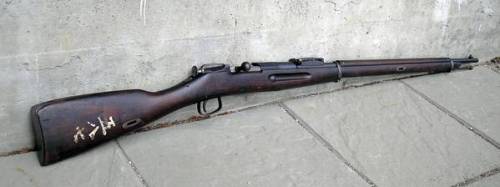peashooter85:The Japanese Mosin Nagant,After World War I many Mosin Nagant rifles from Russia were s
peashooter85:The Japanese Mosin Nagant,After World War I many Mosin Nagant rifles from Russia were scattered all over the world and used by other armies and other nations. Typically when one thinks of a non-Russian Mosin Nagant user in the 1920’s-40’s, Finland comes to mind. During World War I and the 1920’s Finland received hundreds of thousands of Mosin Nagant rifles which they refurbished into some of the best Mosin’s on the market. However a forgotten recipient of Russian surplus arms was Japan, who stockpiled thousands of the rifles in their own arsenals.Before World War I Japan already had over 100,000 Model 1891 Mosin Nagant rifles stored at the Nagoya Arsenal, the result of Japan’s victory over Russia in the Russo-Japanese war of 1904/05. When the Bolsheviks took over the country in 1917, allied powers sent hundreds of thousands of soldiers to occupy Russian ports, capture weapons, and secure the country’s infrastructure. Japan too sent an expeditionary force of 70,000 men to help secure the eastern port of Vladivostok. While there the Japanese Army captured tens of thousands more rifles.For the most part Japan’s stocks of Mosin Nagant rifles would stay in storage until the 1930’s. It was then that Imperial Japanese forces annexed Manchuria and later invaded China. During the war with China Japan supplied tens of thousands of Mosin Nagants to Chinese Warlords. At the time a republican government under Chiang Kai Shek controlled China but many areas were controlled by rival Chinese warlords and bandits. Japan supplied rifles to many of these warlords with the goal of destabilizing the country and the republican government.By the late 1930’s Japan found itself deeply embroiled in the Second Sino Japanese War and later World War II. In order to assist in the training of Japan’s growing Imperial Army, many captured Mosin Nagant rifles were refurbished and modified into training rifles. Often such modifications would include replacement of the stock with that of a Japanese Type 38 stock and removal of the magazine to make the rifle single shot.For the most part Japanese Mosin Nagant’s have the original receiver markings. Some even have American Remington or Westinghouse markings indicating that they were a part of the American made contract rifles shipped to Russia during World War I. Typically Japanese markings can only be found on the buttstock. -- source link
Tumblr Blog : peashooter85.tumblr.com

